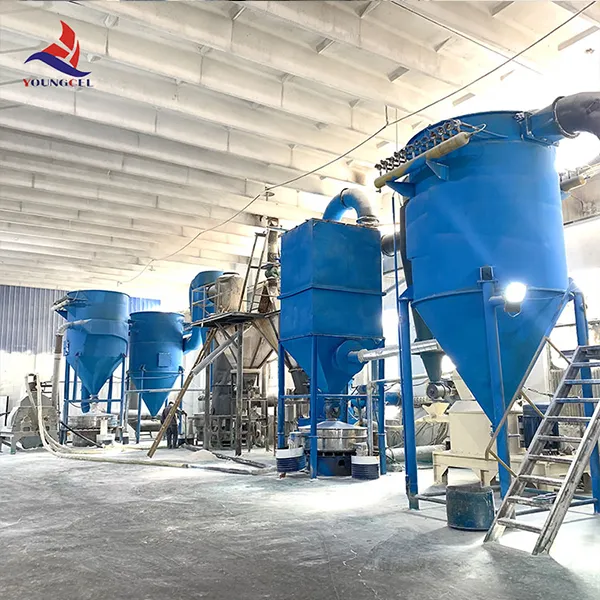The Importance of Cellulose Material An Overview
Cellulose, the most abundant organic polymer found on Earth, is a structural component of the cell walls in green plants, algae, and some species of fungi. Comprising linear chains of glucose units linked by beta-1,4-glycosidic bonds, cellulose is notable for its strength and stability, making it essential for the integrity of plant cells. The significance of cellulose material extends beyond its biological role; it has become an important resource in various industries, including textiles, paper, pharmaceuticals, and biofuels.
Structure and Properties of Cellulose
Cellulose is composed of multiple glucose monomers, which form long chains that can be either crystalline or amorphous. The crystalline regions are densely packed and provide mechanical strength, while the amorphous regions allow for flexibility and accessibility for chemical reactions. The properties of cellulose are characterized by its insolubility in water, high tensile strength, and biodegradability. Its hydrophilic nature makes it capable of absorbing moisture, which can influence its applications and processing methods.
Industrial Applications
1. Textiles One of the most prominent uses of cellulose is in the textile industry, particularly in the production of cotton and rayon. Cotton fibers, composed primarily of cellulose, are valued for their softness, breathability, and durability. Rayon, on the other hand, is a semi-synthetic fiber derived from cellulose, offering versatility in fabric production.
2. Paper Production The paper industry is a major consumer of cellulose, with wood pulp being the primary source. The pulping process extracts cellulose fibers from wood, which are then processed into paper. The sustainability of paper production is a growing concern, leading to innovations in recycling and utilizing alternative cellulose sources, like agricultural residues and non-wood plants.
cellulose material

3. Pharmaceuticals In the pharmaceutical sector, cellulose serves multiple roles. Microcrystalline cellulose is widely used as a filler and binder in tablets, enhancing their stability and consistency. Additionally, cellulose derivatives, such as hydroxypropyl cellulose, have applications in drug delivery systems, improving the solubility and bioavailability of various medications.
4. Biofuels With the increasing demand for sustainable energy sources, cellulose has gained attention as a potential feedstock for biofuels. Cellulosic biomass, derived from agricultural residues and dedicated energy crops, can be converted into bioethanol through enzymatic hydrolysis and fermentation. This process not only provides a renewable energy source but also helps reduce greenhouse gas emissions.
Environmental Impact and Sustainability
The environmental advantages associated with cellulose material are significant. As a renewable resource, cellulose can be sourced sustainably, especially from managed forests and agricultural practices. Its biodegradability means that products made from cellulose do not contribute to long-term pollution. However, challenges remain, such as deforestation, which can lead to habitat loss and biodiversity decline. It is crucial to balance cellulose extraction with ecological conservation to promote a sustainable future.
Conclusion
Cellulose material stands out as an invaluable resource in numerous applications across various industries. From textiles and paper to pharmaceuticals and biofuels, the versatility of cellulose is remarkable. As challenges related to sustainability and environmental impact continue to grow, exploring innovative ways to utilize this abundant polysaccharide will be essential. Embracing a circular economy approach, where cellulose products are reused and recycled, could further enhance the sustainability of this vital material, ensuring that it meets the needs of future generations while minimizing ecological harm. The continued research and development of cellulose-based technologies hold great promise for a more sustainable and eco-friendly world.
-
Rdp Powder: Key Considerations for Wholesalers in the Building Materials IndustryNewsJul.08,2025
-
Key Considerations for Wholesalers: Navigating the World of Hpmc - Based ProductsNewsJul.08,2025
-
Hpmc Detergent: Key Considerations for WholesalersNewsJul.08,2025
-
Key Considerations for Wholesalers: China Hpmc For Tile Adhesive, Coating Additives, Concrete Additives, and MoreNewsJul.08,2025
-
Crucial Considerations for Wholesalers: Navigating the World of Construction MaterialsNewsJul.08,2025
-
Key Considerations for Wholesalers Sourcing Additive For Cement, Additive For Concrete, Additive For Putty from Additive Manufacturer Shijiazhuang Gaocheng District Yongfeng Cellulose Co., Ltd.NewsJul.08,2025




